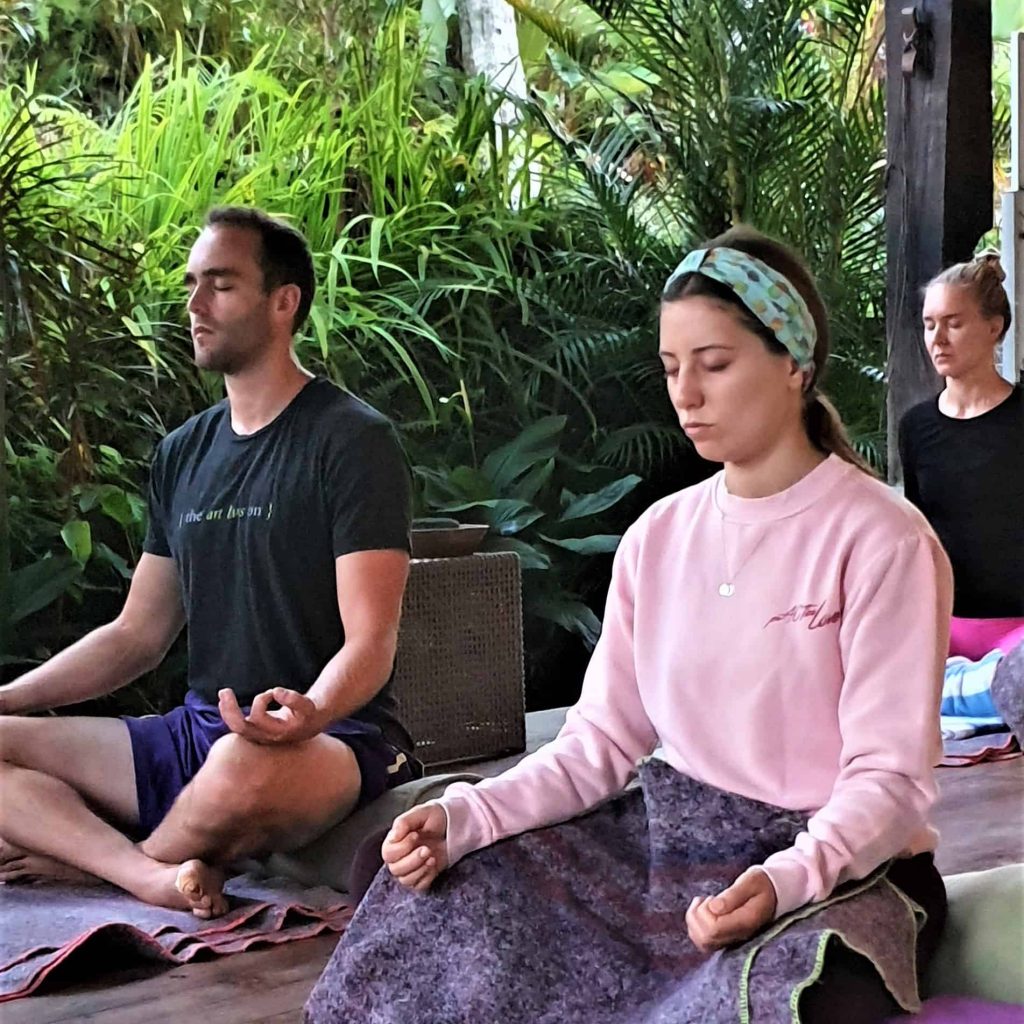The calming and grounding effects of regular yin yoga practice are widely known. Yoga is undoubtedly one of the most powerful practices you can partake in to regulate and de-stress the nervous system. Over the years, countless studies have been conducted that have shed light on this reality and further illustrated the positive impact of yoga on mental health. Regular yoga practice can help manage anxiety, alleviate symptoms of depression, counter fatigue, reduce stress, and improve insomnia.
However, not all yoga styles and practices are the same. As practices differ, so do the physical, energetic, and mental effects. Have you ever wondered why after some yoga classes you feel awake and alert and in others, you are relaxed and falling asleep as you walk out the door? When it comes to the effects of specific asanas and styles of yoga and their impact on the nervous system, research findings align with the teachings of ancient yogis, which you can learn more about if you choose to take a yin yoga instructor course in Bali.
Some asanas and practices in traditional hatha yoga were taught to cultivate Apana Vayu, giving a sense of descending, grounding energy while others were designed to uplift and energize. Inner Yoga Training’s 200 hour vinyasa yin yoga teacher training in Bali goes into the main energetic benefits of different types of yoga poses so you can understand what to practice and when to bring you into balance. Even today, these same poses and practices to cultivate Apana Vayu can activate the parasympathetic nervous system – establishing a descending, grounding, and calming energy.
The parasympathetic nervous system is the branch of the nervous system responsible for calming our body and mind. It is often coined the “rest and digest” branch of the nervous system in that it helps us digest our food, access deep sleep, and, well, rest. The sympathetic nervous system is the flip side of the coin. It is the branch of the nervous system that fires into gear when we are in fight-or-flight mode. When the sympathetic nervous system is active, our muscles are tense, our cortisol levels are high, and it can be hard to think clearly. To regulate the sympathetic nervous system, we can partake in practices that activate the parasympathetic. This is where yoga comes in. The following postures and practices turn down the sympathetic nervous system and activate the parasympathetic nervous system – creating an internal atmosphere of ease.
Forward folds are a go-to when it comes to slowing down the heart rate and deepening the breath. Forward folds are asanas where the front of the upper body comes towards the lower body, such as batakanasana (butterfly pose), uttanasana (standing forward fold), and pashchimottanasana (seated forward fold). Anatomically, forward folds stretch muscles and deeper tissues of the spine and can help with counteracting vertebrae compression. Energetically, they are inward in nature and cultivate a sense of introspection and cultivate the calming energy of Apana Vayu. Nervous system-wise, forward folds promote the activation of the parasympathetic nervous system.
Yin yoga is one of the most prominent styles of yoga for de-stressing and de-exciting the nervous system to promote a sense of internal peace and ease. Yin is characterized by longer hold times in poses and targets the deeper connective tissue and fascia, rather than the more superficial muscular structure. More yang-style practices such as vinyasa yoga activate and create heat in the body and can further activate your sympathetic nervous system. In a yin yoga practice, the emphasis is on activating the parasympathetic nervous system which is more calming and centering. Yin yoga is introspective in nature and helps establish a sense of internal equilibrium. You can learn more about yin yoga at Inner Yoga Training’s upcoming yin teacher training in Bali.
In addition to asana, there are a variety of pranayama or breathing exercises, that further contribute to creating a sense of calm in the body and mind. These include practices such as Bhramari and Nadi Shodana. You can learn more about pranayama, yin yoga, and the energetic qualities of particular yogic practices with Inner Yoga Training’s 200 hour vinyasa and yin yoga certification course or their yin yoga training in Bali.

